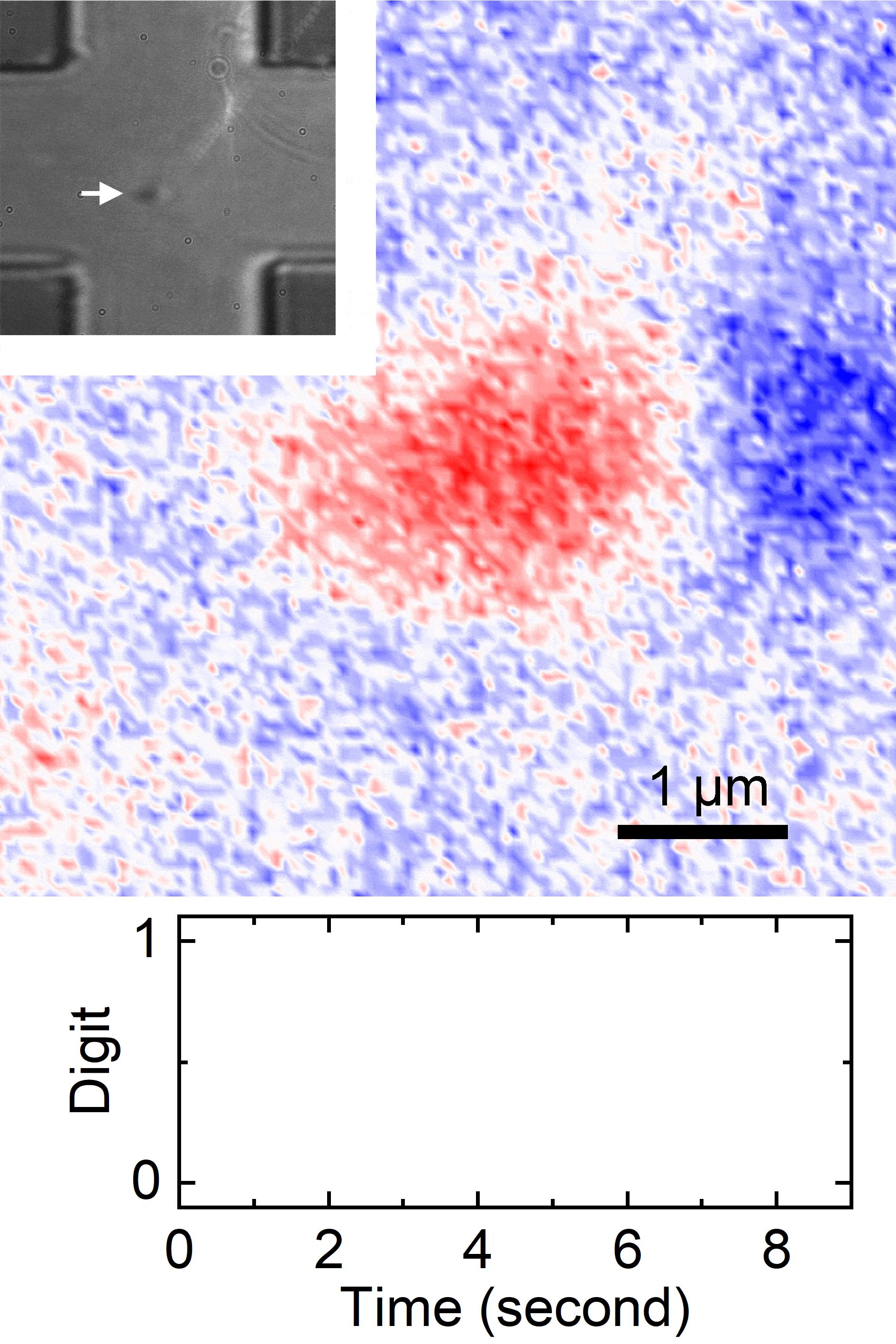It’s been almost a decade since news items began to appear about something in data storage called skyrmions—tiny, swirling magnetic spin patterns in thin films. These spinning magnetic swirls had been proposed over 60 years ago by British physicist Tony Skyrme—from whom the name derives—but suddenly they seemed a potential game changer for magnetic data-storage systems.
Now a team of researchers at Brown University have found a novel way to use skyrmions for an entirely new application: generating true random numbers, which are useful in cryptography, secure communications, and probabilistic computing.
Skyrmions are generated from electron spins in ultrathin materials. Think of electron spins as tiny arrows representing the particle's magnetic orientation (or magnetic moment) as it points up, down, or somewhere in between. When some extremely thin, essentially two-dimensional materials are in their lowest energy states, they possess a property known as perpendicular magnetic anisotropy, which means the magnetization orientation has a preferred direction. If you apply electricity or a magnetic field to a 2D material in this state, some electron spins will flip. As a result, the surrounding electrons are jostled around, creating a magnetic whirlpool around the flipped electron: a skyrmion.
While skyrmions once held promise as possible future data-storage media, some complications cropped up along the way. One complication concerns a phenomenon that occurs when you place a magnetic field perpendicular to the plane of a conductor. The current flow in the conductor shifts, creating a measurable change in voltage. And though it may sound arcane, the so-called Hall effect is today the essential element behind some GPS technology, smartphone components, and brushless DC motors.
In part because the Hall effect introduced extreme difficulties in skyrmion data-storage prototypes, the idea emerged to use the seeming detriment to the system as a benefit instead.

Researchers began working on ideas such as using Brownian motion (the constant movement of atoms and molecules as they bounce off one another in a liquid or a gas) of skyrmions for use in devices such as a reshuffler for stochastic computing, in which random bits are used to calculate via simple circuits. Unfortunately, such devices also required complex geometry and posed their own problems in exercising precise control over skyrmion motion.
Undaunted, Kang Wang, a postdoctoral research associate at Brown University, was inspired by this latest line of research.
“We came up with the idea of taking advantage of defects in magnets, which are usually considered to be a weakness in traditional skyrmion devices, and introducing the local dynamic behavior of a skyrmion to make it a robust true random-number generator,” says Wang.
The Brown researchers fabricated magnetic thin films using a technique that produced subtle defects in the material's atomic lattice. These defects are created by manipulating the growth conditions for the films, such as by modifying layer thicknesses in typical regions to trap the skyrmions in these defects, known as pinning centers.
By holding the skyrmions in these pinning centers, the nanosize whirlpools begin to fluctuate randomly in size. While one section of the skyrmion is held tightly to one pinning center, the rest of the skyrmion jumps back and forth, wrapping around two nearby pinning centers, one closer and one farther away. This random jumping back and forth of the skyrmions from a large diameter to a small diameter can be measured. Measuring these fluctuations is what generates the random numbers.
The change in skyrmion size is measured through the Hall effect. When the skyrmion size changes, the voltage changes to the point where it can be easily measured. These random voltage changes are then used to produce a string of random digits.
Initial simulation studies carried out by the researchers indicate that this approach should be easily scalable.
“The skyrmion system can be easily made with simple sample growth and fabrication processes,” says Wang. “Moreover, the skyrmion true random-number generator can be integrated with other skyrmion devices in a single die for the implementation of in-memory and computing architectures.”
Wang is confident that the technology for a skyrmion-based random-number generator may not be that far off.
“This could be used fairly soon," says Wang. "Key development landmarks may be better control of the spatial energy landscape confining a skyrmion, further improvement of operation speed and the output signals from the device, and integration of the skyrmion system with integrated circuits for signal readout and processing.”
- The Future of Cybersecurity Is the Quantum Random Number ... ›
- A True Random-Number Generator Built From Carbon Nanotubes ... ›
- Researchers Simplify Switching for Quantum Electronics - IEEE Spectrum ›
Dexter Johnson is a contributing editor at IEEE Spectrum, with a focus on nanotechnology.



